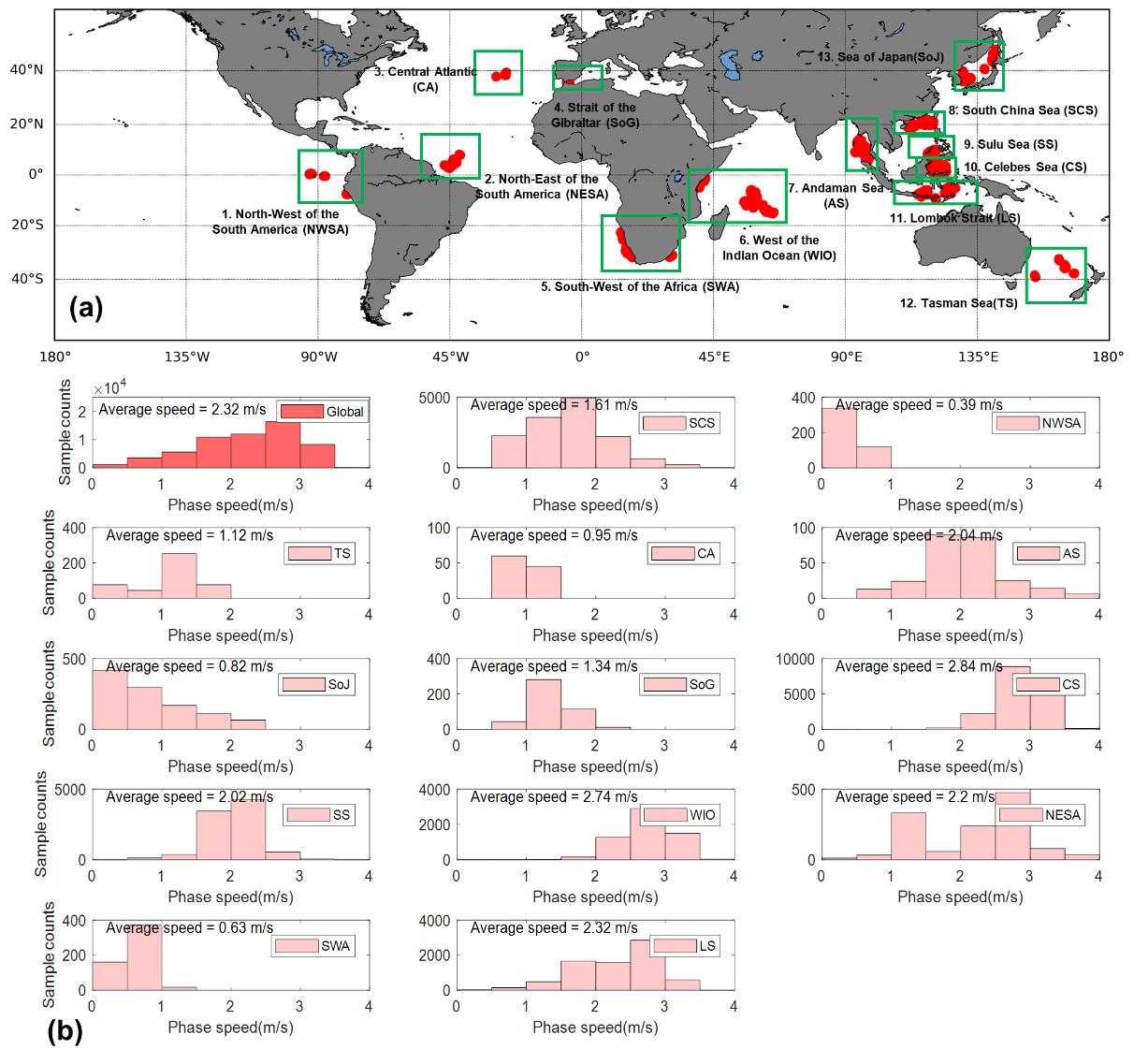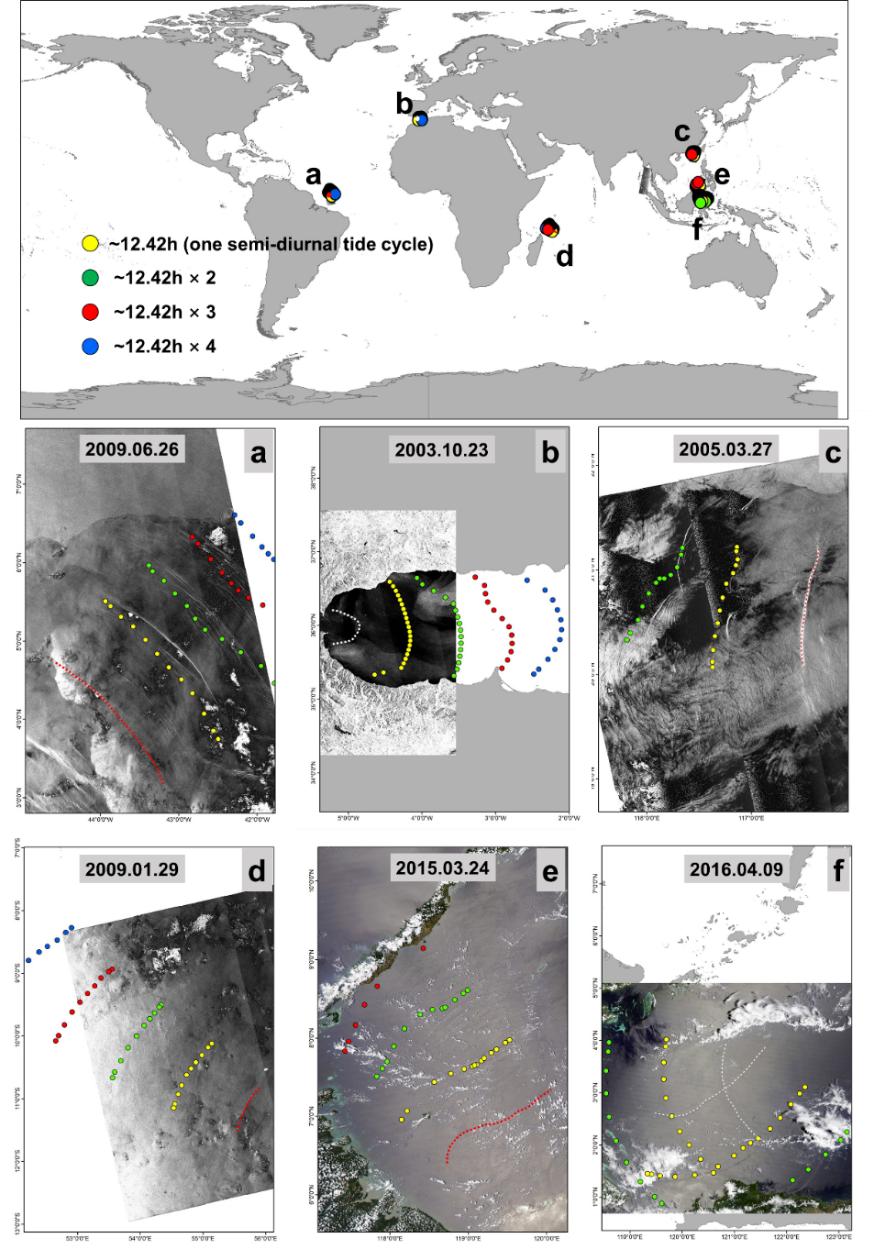Internal solitary waves (ISWs) are widely distributed in the global oceans, and their propagation is affected by complicated environmental factors. Satellite remote sensing images are the main data source for ISW study because of their large coverage and frequent revisiting time.
However, the number of satellite images is still far from covering the globe, and ISW samples have an imbalance in geographical distribution. Theory-based methods also suffer from application limitations.
Recently, the research team led by Prof. LI Xiaofeng from the Institute of Oceanology of the Chinese Academy of Sciences (IOCAS) coupled physical mechanisms and artificial intelligence algorithms to make successful ISW propagation forecast in the global oceans.
The study was published in Remote Sensing of Environment (impact factor 13.85) on Oct. 27.
Researchers collected a global dataset covering 13 ISW hotspots and revealed the relationship between ISW propagation speed and tidal information on a global scale for the first time. The ISW physical mechanism was incorporated into the model-building process. The developed ISW speed model shows superior performance at different water depth ranges.
Experiments show that the developed model can be applied to study long-term ISW speed characteristics and study their relationships with tidal information. The developed model can reveal ISW propagation characteristics and how the changing ocean stratification will influence the ISW propagation. The model was successfully applied to the global ISW propagation forecast and can accurately describe the ISW waveform.
"Coupling the physical mechanism and advanced model architecture both help to promote the model performance," said Dr. ZHANG Xudong, first author of the study.
"As a fast-growing technology, AI can establish fast and direct mapping relationships in studying complex marine phenomena. It is an efficient tool and lightweight method to understand complex marine phenomena and mine useful information from big ocean data," added Prof. LI.
The study was funded by the National Natural Science Foundation of China, etc.

Fig. 1 Distributions of 13 ISW hotspots in global oceans.

Fig. 2 ISW forecast in different ocean areas.
Xudong Zhang and Xiaofeng Li*. (2022). Satellite data-driven and knowledge-informed machine learning model for estimating global internal solitary wave speed. Remote Sensing of Environment, 283, 113328.
(Text by ZHANG Xudong)
Media Contact:
ZHANG Yiyi
Institute of Oceanology
E-mail: zhangyiyi@qdio.ac.cn
(Editor: ZHANG Yiyi)

